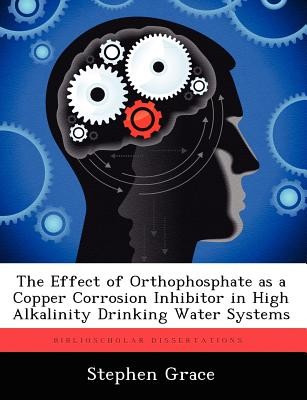
- We will send in 10–14 business days.
- Author: Stephen Grace
- Publisher: BiblioScholar
- ISBN-10: 1249592534
- ISBN-13: 9781249592532
- Format: 18.9 x 24.6 x 0.5 cm, minkšti viršeliai
- Language: English
- SAVE -10% with code: EXTRA
The Effect of Orthophosphate as a Copper Corrosion Inhibitor in High Alkalinity Drinking Water Systems (e-book) (used book) | bookbook.eu
Reviews
Description
The purpose of this research was to investigate orthophosphate as a corrosion inhibitor for copper pipe in a high-alkalinity drinking water system. Specifically, this thesis sought to answer three research questions regarding the impact of orthophosphate treatment, the nature of the mechanism by which orthophosphate controls copper corrosion, and the value of equilibrium modeling in predicting orthophosphate's effects. The research questions were answered through a comprehensive literature review and experimental methodology integrating laboratory jar tests, water sampling and analysis from a field investigation, qualitative solids analysis, and equilibrium model application. This study analyzed field data obtained over the course of a year from a high alkalinity water system into which orthophosphate was added to control copper concentrations. This field research generally supports results previously reported in the literature: in high alkalinity, neutral pH water, a dosage of 3 - 4 mg/L orthophosphate can reduce copper levels in a drinking water system from over 2 mg/L to below the 1.3 mg/L USEPA action level. While surface solid analysis did not provide conclusive evidence confirming the nature of orthophosphate's control mechanisms, jar tests and equilibrium solubility models were demonstrated to provide useful quantitative predictions of how orthophosphate reduces copper concentrations in various waters.
EXTRA 10 % discount with code: EXTRA
The promotion ends in 21d.22:20:11
The discount code is valid when purchasing from 10 €. Discounts do not stack.
- Author: Stephen Grace
- Publisher: BiblioScholar
- ISBN-10: 1249592534
- ISBN-13: 9781249592532
- Format: 18.9 x 24.6 x 0.5 cm, minkšti viršeliai
- Language: English English
The purpose of this research was to investigate orthophosphate as a corrosion inhibitor for copper pipe in a high-alkalinity drinking water system. Specifically, this thesis sought to answer three research questions regarding the impact of orthophosphate treatment, the nature of the mechanism by which orthophosphate controls copper corrosion, and the value of equilibrium modeling in predicting orthophosphate's effects. The research questions were answered through a comprehensive literature review and experimental methodology integrating laboratory jar tests, water sampling and analysis from a field investigation, qualitative solids analysis, and equilibrium model application. This study analyzed field data obtained over the course of a year from a high alkalinity water system into which orthophosphate was added to control copper concentrations. This field research generally supports results previously reported in the literature: in high alkalinity, neutral pH water, a dosage of 3 - 4 mg/L orthophosphate can reduce copper levels in a drinking water system from over 2 mg/L to below the 1.3 mg/L USEPA action level. While surface solid analysis did not provide conclusive evidence confirming the nature of orthophosphate's control mechanisms, jar tests and equilibrium solubility models were demonstrated to provide useful quantitative predictions of how orthophosphate reduces copper concentrations in various waters.


Reviews